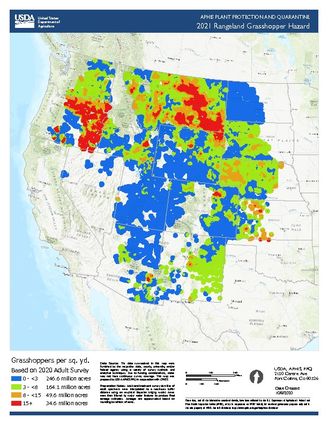Grasshopper suppression program initiated
November 19, 2020
By PR Extension Office
The 2021 Rangeland Grasshopper Hazard map based on adult surveys last summer has all of Powder River County in the red zone, according to Powder River Extension Agent Mary Rumph.
"That means that 15 or more adult grass...
For access to this article please
sign in or
subscribe.



Reader Comments(0)